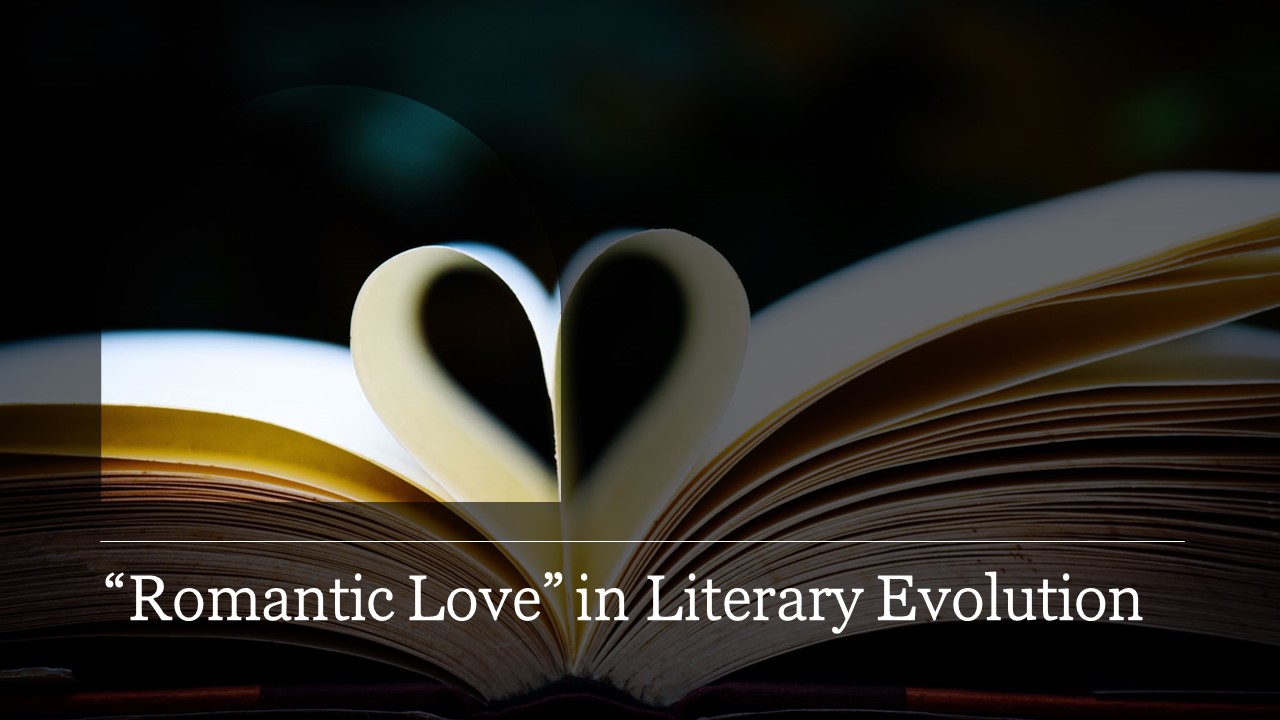We evidently recognize that “romantic love” can exist on both the plane of cultural ideas and the plane of individual realities. Folklore, poems, novels, and other pieces of literature and art represent the “ideas of love” as made-up fiction with the plots of stories and narration of behavior, perception, and emotions associated with love. This plane of love represents “what love can be.”
Individual experiences and expressions, “loving” interactions, and relationships with the loved one, on the other hand, represent the “individual and relationship realities of love.” This plane of love represents “what love really is.” In human societies, romantic love can exist in any of these forms or in both.
A Fascinating Literary History of Romantic Love
This article looks at when and how “ideas of romantic love” became important in the history of literary fiction across different times and places.
French and Spanish studies recently verified the cross-cultural universality of passionate love beliefs. Nicolas Baumard, Elise Huillery, Alexandre Hyafil, and their colleagues from France and Spain recently compiled and analyzed a huge database of literary fiction from the Middle Bronze Age to the Early Modern period, spanning across 3,800 years and 19 globe regions of the world (Baumard, Huillery, Hyafil, et al., 2022). They have demonstrated the cross-cultural universality of “the ideas of romantic love” in terms of plots and narration.
The Surprising Synchrony of the History of Romantic Love
Recent research has revealed that the emergence of romantic love in literary fiction in certain periods of history occurred not only in Western societies but also in other parts of the world. Literature historians have also documented a similar rise in the importance of love in literary fiction in the Arab world, Persia, India, China, and Japan across centuries. For example, romantic love appeared at nearly the same time in the Early Modern period in the literature of both the East and the West (Baumard et al., 2022; Karandashev, 2017).
Economic Wealth and Romantic Love
Studies suggest that the flourishing of romantic love in literature is a product of economic development in societies (Baumard et al., 2022; Duby, 1994).
Researchers discovered that economic development in ancient societies contributed to the rise in importance of romantic love by combining literary history, cultural evolution, causal methods, and model-based analysis. They demonstrated that higher incidences and prevalences of love themes in narrative fiction are strongly related to regional differences in economic development. The higher levels of economic development in these societies are associated with an increased abundance of romantic love literature in their cultures.
Similarly, anthropological studies have revealed that in horticulturalist and pastoralist societies, which are associated with low economic development, ideas of love for men and women are culturally marginal experiences and expressions. On the other hand, in societies with intensive agriculture and production, associated with relatively higher economic development, love can play a much more important role (Goody, 1998; Gregor, 1985/2008).
The Human Evolutionary Transition to the Consumption of Meat Could Create the Arts
Different interpretations of these findings are possible. Here is one of these possibilities. There is a common saying derived from our evolutionary past that “eating meat created art” in human history. What does it mean?
People in the gathering societies, whose main food was plants, were always busy searching for their subsistence. They were continually hungry. It is because plants provide them with low-energy resources for nutrition. So, people just did not have time to think about art and literature.
On the other hand, eating meat provides a higher energy resource for nutrition. So, people in societies that eat meat could afford to stop and think for some time about something else beyond their daily needs. Since they had not been hungry for a while, they were relatively free from thinking about food. Therefore, they had time to think about art.
Such an evolutionary idea sounds logically convincing, doesn’t it?
How Did Economic Development Increase the Cultural Importance of Romantic Love?
In the same vein, the economic development of a society liberates men and women from the constraints of daily hassles and concerns about subsistence and survival. Therefore, the economic development of societies, along with wealth, brings people freedom from their daily needs and the freedom to think about love. Consequently, these affluent conditions of life increase the cultural importance of love.
So, when individuals have more resources, they change their priorities. Love becomes more important for them than survival. Baumard and his colleagues showed how this is reflected in literature: narratives about war and status become less frequent than narratives about love (Baumard et al., 2022).
Only men and women who did not have to struggle daily for their subsistence and survival were able to think and write about love. They had spare time to write. Or, they had money to pay authors who could write and entertain them with romantic love ideas. And they had leisure time to read about all this. Others’ love is so entertaining to read about when one is affluent enough to relax and enjoy such reading.
For example, the remarkable variability of love fiction across time occurred in these societies.
“during the Roman period in Greece, the Abbasid Caliphate in the Arabic countries, the Heian period in Japan, and the Central Medieval, and Early Modern periods in France and England. In each case, this corresponds to periods of high economic development. By contrast, the level of romantic love appears to be lower in the least developed European areas (Wales, Ireland, Norway, Russia and to some extent Byzantium).”
“The convergence of Eurasian societies can be observed at the end of the time frame. France, England, Japan, India and China all experience an increase in romantic love.”
(Baumard et al., 2022, p. 512).
